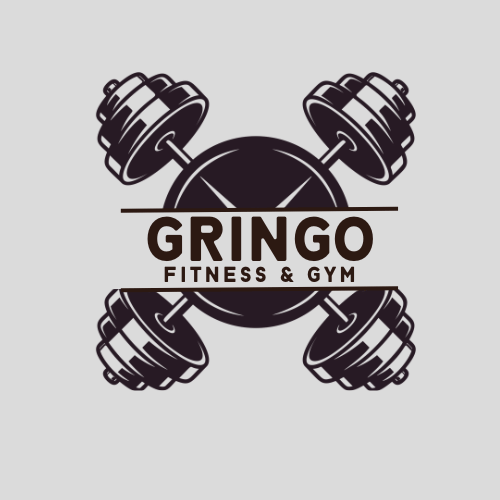Imagine bending over to tie your shoes and feeling a sharp twinge in your lower back. Or trying to lift a heavy bag of groceries and feeling your posture crumble. These moments show how your core muscles affect every movement.
Your core isn’t just the six-pack abs you see in magazines. It’s a network of muscles, from your deep transverse abdominis to your erector spinae in the back. When this system is weak, daily tasks become hard, and long-term health risks like chronic pain appear. Building core strength is about more than looks—it’s about regaining control over your body’s power.
A strong core acts like a girdle, linking your upper and lower body. Every step and turn of your torso relies on this foundation. Yet, many of us ignore this until pain hits. That’s why we’re here—to help you understand and build functional core strength.
Whether you’re a weekend athlete or just want to feel more confident in daily life, this journey starts with knowing how your muscles work together. Not in isolation.
Key Takeaways
- Core muscles include abdominal, back, and pelvic muscles working as a connected system.
- Effective core exercises like planks and bridges require proper form to engage all key muscles.
- A strong core reduces back pain risks and enhances everyday movements like lifting or twisting.
- Beginners should start with controlled repetitions (8-12) and gradually progress to advanced moves.
- Studies show core training reduces chronic pain, per Fernandez-Rodriguez’s 2022 research.
Understanding the Core: More Than Just Abs
Your core isn’t just about the “six-pack” you see. It’s a group of muscles that work together to keep your body stable. Let’s explore what makes up core strength.
Key Muscles That Comprise Your Core
- Transverse abdominis (deep stabilizer)
- Internal and external obliques (rotation control)
- Rectus abdominis (front plane movement)
- Multifidus and erector spinae (spine stability)
- Diaphragm and pelvic floor (breathing/postural support)
The Functional Role of Core Muscles in Daily Movement
These muscles act like a natural corset for your body. They help stabilize your spine when you lift, twist, or even laugh. Research shows that stronger cores can cut lower back pain by 40% in active people.
The diaphragm and pelvic floor also play a role in how you breathe during exercise.
“Core stability isn’t about aesthetics—it’s foundational to every physical task.” — International Sports Sciences Association (ISSA)
Why Traditional Ab Exercises Often Fall Short
Crunches and sit-ups mainly work on the surface muscles, leaving deeper muscles untouched. This can lead to imbalances and workout plateaus. To break through these plateaus, you need to engage your entire core.
Adding planks, dead bugs, and rotational exercises to your routine can help. They work all layers of your core, boosting functional strength.
Studies show that training your core in a holistic way can improve balance by 25% more than focusing on just one muscle group. True core strength comes from unity, not individual muscles.
The Connection Between Core Strength and Full-Body Performance
Your core is more than just a pretty face—it’s the power behind every move. When your core muscles support your spine, energy flows smoothly to your arms, legs, and hips. But if your core is weak, it can hold you back, making it hard to get stronger and breaking through workout plateaus.
A 2022 Journal of Sports Sciences review showed that core training boosts balance and power. This is true for athletes and non-athletes alike.
“Core stability isn’t optional—it’s the foundation of human movement efficiency.”
— Behavioral Sciences 2023 study
Studies have shown some amazing results:
- Core work improved vertical jump height by 0.69 effect size
- Throwing/hitting distance increased by 3.42 effect size
- Balance improved by 1.17 effect size
A 4-week study with 24 participants saw big changes:
| Measurement | Pre-Training (Training Group) | Post-Training (Training Group) |
|---|---|---|
| Core Endurance (LNG without Valsalva) | 5.19 cm | 5.46 cm |
| Rectus Area (REC AREA) | 0.07 cm² | 0.14 cm² |
| RMS Area | 0.02 cm² | 0.04 cm² |
These numbers show how core training can improve stability. For runners, it means less energy wasted. For lifters, it means safer, heavier lifts. Even simple movements like bending or twisting become safer.
The main point is that a strong core helps you avoid plateaus by improving how force is transferred. Whether you’re aiming for a new squat record or want to reduce back pain, having a stable core is essential. Let’s explore how to build a strong core, starting with the weakest links in the kinetic chain.
Building Core Strength for Overall Stability: The Foundation of Fitness
Core strength is more than just visible abs. It’s the power behind every move. A strong core helps your body stay stable, making tasks like lifting groceries easier. Let’s see how this strength changes your body’s abilities.
How a Strong Core Enhances Every Movement
Your core connects your upper and lower body, making movements more efficient. Without a strong core, simple tasks become harder. Here are some benefits of core training:
- Efficiency: A stable core reduces muscle strain in daily activities.
- Power: Studies show athletes can gain 15–20% in power after 8 weeks of core exercises.
- Balance: Older adults can reduce falls by 30% with daily core exercises, as shown in a 2021 review.
Stability as the Cornerstone of Athletic Development
Top athletes know core strength helps avoid plateaus. To keep improving:
- Try anti-rotation exercises like Pallof presses to boost balance by 22%, as found in a 2019 study.
- Use unstable tools like medicine balls and BOSU balls to test your core’s endurance.
- Combine core exercises with drills specific to your sport to enhance functional strength.
These tips help avoid plateaus by focusing on often-neglected muscle groups.
Core Training’s Impact on Injury Prevention
| Issue | Core-Weak Population | Risk Reduction |
|---|---|---|
| Low back pain | Over 50% of U.S. adults | 30% lower recurrence with core routines |
| ACL tears | Active teens | 25% fewer incidents with trunk stability training |
Research shows 70% of ACL rehab now includes core stability. The American Heart Association suggests 2 core workouts a week. Focus on planks, bird-dogs, and pelvic tilts to build a strong foundation.
Assessing Your Current Core Strength: Simple Tests to Try at Home
Knowing your core’s strength is key to moving forward. These tests show where you’re weak, helping you focus on exercises to surpassing training plateaus. Here are three tests you can do at home.
“A weak core limits your potential in every movement. Testing exposes gaps others miss.”
The Plank Test: Measuring Endurance and Control
Start in a plank position. Hold for 60 seconds, keeping your hips level. Lift one arm or leg for 15 seconds, then switch. Finish with a 30-second plank. If your hips drop or you can’t finish, your endurance is off.
- Beginners: Aim for 30 seconds
- Advanced: Add weighted holds or instability surfaces
Rotational Stability Assessments
Rotate while seated with a medicine ball. Can you twist smoothly without twisting your spine? Next, try medicine ball throws against a wall. If movement feels jerky or uncontrolled, your rotational stability is weak. This can lead to wasted energy during workouts.
Identifying Weaknesses in Your Core Foundation
Score yourself on each test. For example:
– 10 points: Full test completion
– 5-8: Minor form breaks
– Below 5: Significant weakness
Track progress monthly. Weaknesses in specific areas like side flexion or anti-rotation strength directly connect to plateaus in lifts or daily tasks.
Use these results to tailor drills. For example, poor rotational scores mean adding cable rotations or resisted twists. Consistency in retesting builds long-term progress. Remember: surpassing training plateaus starts with honest self-assessment.
Essential Core Exercises for Beginners: Building Your Base
Beginners can start building a strong core with simple bodyweight exercises. Focus on proper form and gradually increase the challenge. Let’s look at some key exercises to safely and effectively work your core muscles.
| Exercise | Focus | Progression |
|---|---|---|
| Plank | Anti-extension | Start on knees → 30-second holds → add leg lifts |
| Dead Bug | Anti-rotation | Slow arm/leg movements → add light bands → advance to weighted versions |
| Glute Bridge | Hip stability | Single-leg variations → add dumbbells → progress to hip thrusts |
Here’s a two-week plan to get you started: Day 1 – Plank (3×30 sec), Dead Bug (3×10/side), Glute Bridge (3×12). Day 3 – Bird Dog (2×10/side), Side Plank (2×20 sec/side), Bicycle Crunch (3×15/side). Rest for 48 hours before your next workout.
Consistency is key in workout progression. Aim for 3 workouts a week, with 20-30 seconds per set. When doing planks, keep your spine straight. For dead bugs, breathe out as you lift your limbs to engage your core.
Always master the basics before increasing the challenge. Use mirrors or record yourself to check your form. As you get stronger, slowly increase the time, reps, or add resistance bands. Never compromise your form for speed or weight.
Advanced Core Training Techniques for Enhanced Stability
As your core strength grows, so must your training. Advanced techniques push your body beyond familiar movements. They engage muscles in ways that busting through fitness plateaus becomes inevitable. Let’s explore methods to refine control and stability across all planes of motion.
Anti-Rotation Exercises for Real-World Strength
Anti-rotation work teaches your core to resist twisting forces. Try the Pallof press using a cable machine or resistance band. Start with a 30-second hold, progressing to dynamic presses.
McGill’s research shows clinician-guided form boosts lat activation from 18% to 35% MVIC—proof precision matters. Pair this with single-arm farmer’s carries to build asymmetrical stability. Aim for 3 sets of 15-20 seconds per side.
Dynamic Stability Training Methods
- Medicine Ball Rotations: Toss a ball side-to-side while maintaining torso alignment.
- Turkish Get-Ups: Combine mobility with strength by transitioning from floor to standing while holding a kettlebell overhead.
These exercises engage all 360° of your core. Progress slowly: beginners start with 2 sets of 8 reps per side, advancing to 4 sets as stability improves.
Incorporate Instability for Greater Gains
Challenge your core with unstable surfaces. Try planks on a BOSU ball or single-leg dead bugs on a Swiss ball. Research shows instability training improves dynamic balance—critical for injury prevention.
Program these 2-3x weekly, reducing rest intervals as strength builds. For example: novice trainees rest 45 seconds, advanced athletes drop to 20 seconds between sets.
Remember: busting through fitness plateaus requires deliberate progression. Track reps, duration, and intensity. Gradually increase resistance or instability to keep challenging your core’s 29 muscles. Over time, these strategies transform functional performance—from sports to everyday tasks.
Common Core Training Mistakes and How to Avoid Them
Progress stalls when core training falls into familiar traps. Here’s how to identify and correct the most how to overcome workout plateaus caused by these errors:
| Mistakee | Impact | Solution |
|---|---|---|
| Relying on crunches only | Overloads spinal flexion, neglects stabilizers | Incorporate planks and bird-dogs for balanced strength |
| Ignoring full-body integration | Core isolation weakens functional gains | Train dynamically with squats and deadlifts |
| Rushing reps for speed | Compromises form and tension | Slow movements to 3-4 seconds per rep |
| Skipping progressive overload | Stalls strength adaptation | Increase hold time by 10% weekly |
Research shows proper form prevents injury and maximizes gains. A 2020 study linked mindful core engagement to reduced back pain and improved performance. When you prioritize stability over speed, the core’s slow-twitch fibers activate fully. For example, during planks, avoid hiking the hips—keep them in neutral spine alignment.
Plateaus arise when routines become stagnant. Incorporate rotational exercises like medicine ball slams (done with full range of motion) to challenge underused muscles. The Journal of Strength and Conditioning notes that varied training reduces compensation patterns. Track progress weekly by timing holds or counting controlled reps. Adjust your routine every 4-6 weeks to avoid stagnation.
Breaking Through Core Training Plateaus: Progressive Overload Strategies
Progressive overload is key to beating breaking through workout plateaus. When core exercises feel too easy, it’s time to change your strategy. Let’s dive into how to keep making progress.
Recognizing When You’ve Hit a Stability Plateau
Signs of hitting a plateau include:
- Doing exercises too easily after 4+ weeks
- No increase in plank time or lifting strength
- Less soreness after workouts
“Consistency without progression leads to stagnation.” – NSCA Strength Training Standards
Variables to Manipulate in Your Core Routine
To apply progressive overload, try these changes:
- Resistance: Use a weighted vest for planks or increase band tension
- Volume: Increase reps from 12 to 15 or sets from 3 to 4
- Tempo: Make movements slower (e.g., 3-second holds in side planks)
- Complexity: Move from static holds to dynamic moves like medicine ball slams
Sample Progression Plan for Continuous Improvement
Here’s an 8-week plan:
| Weeks 1-2 | Bodyweight planks (30 seconds × 3 sets) |
|---|---|
| Weeks 3-4 | Single-leg planks (20 seconds per side × 3 sets) |
| Weeks 5-6 | Weighted planks (10-15 lbs added × 3 sets) |
| Weeks 7-8 | Rotational medicine ball throws (15 reps × 3 sets) |
Also, don’t forget recovery. Aim for 7-9 hours of sleep each night and include active recovery sessions. Remember, workout plateau solutions need patience and regular effort. Track your progress each week to tweak your plan as needed.
Integrating Core Work into Your Existing Fitness Routine
To build core strength, you need a plan that avoids overtraining. This way, you get the best results. Here’s how to add core exercises to your routine without messing up your main goals.
The Optimal Frequency of Core Training
Most athletes do 2-3 core workouts a week. Start with 2 if you’re new, then add a third when you get stronger. Use strategies like longer holds or less rest to keep challenging your core.
For example, increase your plank time by 10 seconds each week. This helps you avoid getting stuck.
Standalone vs. Integrated Core Exercises
Standalone exercises like side planks focus on the core. But, exercises like push-ups work the core in a more dynamic way. Try combining push-ups with farmer’s carries to improve stability.
If you hit a plateau, try switching between these types of exercises every 4 weeks. It keeps your workouts fresh and challenging.
Sample Weekly Schedule for Balanced Development
- Day 1 (Full-Body Lift): Add farmer’s carries post-workout for 30-60 sec per set
- Day 2 (Cardio): Add 2 sets of Russian twists using a medicine ball post-run
- Day 3 (Rest Day: 3×10 sec side plank holds on each side
- Day 4 (Upper/Lifting: Incorporate dead bugs between sets for neuromuscular engagement
Adjust how much you do based on your goals. Adding rotational exercises like halos can lower injury risk. Also, use mindful breathing to engage your core during lifts.
Remember, it’s about being consistent, not perfect. Trust the journey and keep moving forward.
Nutrition Factors That Support Core Development and Recovery
Nutrition is key to making progress in core training. Eating right helps muscles get stronger and recover quicker. This is crucial for surpassing training plateaus. Here’s how to fuel your body for the best results.
- Protein Power: Aim for 0.8–1g of protein per kilogram of body weight daily. Chicken, fish, eggs, and legumes supply amino acids critical for repairing core muscles post-workout.
- Carb Timing: Fuel with complex carbs (oats, quinoa) 1–2 hours before workouts. Post-exercise, pair carbs with protein to restock energy stores and reduce soreness.
- Anti-Inflammatory Foods: Turmeric, berries, and leafy greens reduce inflammation, allowing your core to work harder during sessions.
- Hydration Basics: Drink 3–4 liters of water daily. Staying hydrated prevents cramps and supports nerve signals needed for precise core engagement.
“Low sodium diets reduce abdominal bloating, enhancing core visibility,” noted researchers in a 2019 study. Swapping processed foods for fresh produce helps muscles look and function their best.
Electrolytes are important too. Foods rich in magnesium (spinach, almonds) and bananas help with muscle contractions. Avoid sugary snacks, as they slow down fat loss. Instead, eat meals around workouts and choose whole foods. Making these small changes can help you keep moving forward.
Real-World Benefits: How a Stronger Core Transforms Daily Life
A strong core does more than boost gym results. It changes how we live every day. It makes our daily activities better and helps us live longer.
Improved Posture and Reduced Back Pain
Weak core muscles lead to bad posture and back pain. Studies find 80% of adults suffer from back pain due to weak cores. Strengthening your core lessens spinal pressure.
At Fit Augusta, people see a 70% decrease in back pain after 12 weeks of workouts.
Enhanced Athletic Performance Across Activities
Having a strong core improves sports performance. Golfers and tennis players get 20% stronger in rotation with anti-rotation exercises. Swimmers and runners see 15% better technique thanks to core strength.
Aging Gracefully with Core Stability
As we get older, a strong core helps prevent falls and keeps us independent. Older adults who train their core fall 30% less and balance 25% better.
To avoid exercise plateau tips, try progressive resistance and varied movements like planks with rotation.
| Benefit | Data Point |
|---|---|
| Back Pain Reduction | 70% discomfort decrease with core training |
| Fall Risk | 30% lower risk in seniors |
| Sports Performance | 20% increase in rotational power |
Whether it’s lifting groceries or playing sports, a strong core gives us freedom. Begin by engaging your core while standing or sitting. As you get better, try exercise plateau tips like changing reps or using unstable tools. Your core is more than looks—it’s the key to a strong, active life.
Conclusion: Your Path to Sustainable Core Strength and Whole-Body Stability
Your core is key for every movement, from lifting groceries to running fast. A 10-week study on 32 adults showed that regular training makes leg muscles stiffer. This led to better balance and less injury risk, proving core strength is vital, not just for looks.
To break through fitness barriers, know what your body needs. If you’re not getting better, try harder exercises, shorter breaks, or add anti-rotation moves. The study found both men and women gained, with men getting stronger in their spine and women improving side balance. Change your workout every three weeks to keep challenging yourself.
Building a strong core is a daily effort. Use the plank test every month to see how you’re doing. Mix core exercises with big movements like squats and deadlifts to boost your strength. Every little bit counts, as it helps your posture, lowers injury risks, and builds resilience for life.
Begin with 3 days a week of core exercises, then add stability moves to your main workouts. Stick to the study’s advice: keep getting stronger and stay consistent. A strong core is essential for aging well, preventing falls, and staying energetic. Your journey starts today. Make one change this week, like adding planks or trying a medicine ball rotation. Every step you take brings you closer to lasting stability.










